Kitesurfing in Sri Lanka: Explore Your Next Adventure


Intro
Sri Lanka, an island nation with a rich tapestry of culture and breathtaking landscapes, has emerged as a must-visit destination for kitesurfing enthusiasts. With its favorable winds and diverse coastal terrains, the country offers an exciting mix of conditions suitable for all skill levels, from the curious beginner to the seasoned pro.
The sport is not merely about riding the waves; it encapsulates a unique experience that intertwines adventure with the local way of life. As you prepare to skim over the crystal waters, this exploration will guide you through the essential aspects of kitesurfing in Sri Lanka.
Whether you are looking to develop your skills, understand the needed gear, ensure your safety, or connect with like-minded adventurers, the insights here will pave the way for a thrilling experience.
Jumping into the heart of kitesurfing, let’s get into the techniques and tips that will hone your skills and enhance your time on the water.
Prelude to Kitesurfing in Sri Lanka
Kitesurfing, a sport that harmoniously blends adrenaline and artistry, has seen a remarkable surge in popularity. Particularly in regions like Sri Lanka, it stands out as more than just a pastime; it's a gateway to adventure. As thrill-seekers flock to the emerald shores of this island paradise, kitesurfing isn't merely a hobby—it's becoming a lifestyle.
The Rise of Kitesurfing as an Adventure Sport
In recent years, kitesurfing has gone from a niche activity to a mainstream option for those craving excitement. This sport captivates individuals with a perfect mix of skill, balance, and a dash of daring. It's no wonder that many have taken to the waters to feel the rush of wind in their hair and catch the waves beneath their feet.
This evolution is driven not only by the thrill of the ride but also by a global community that's eager to share knowledge and experiences. Social media has played a key role here, with influencers showcasing the enchanting locations and breathtaking maneuvers that come with kitesurfing. Each twist and turn captured on camera has encouraged others to grab their boards and explore the open waters, giving rise to a more engaged and enthusiastic global culture.
Kitesurfing schools and communities sprouting up in key locations help newcomers learn the ropes, while seasoned riders share their expertise, igniting passion and furthering the sport’s reach. This friendly and inclusive environment welcomes adventurers of all levels, making the sport increasingly accessible.
Why Sri Lanka is a Kitesurfing Hotspot
Nowhere encapsulates the essence of kitesurfing quite like Sri Lanka. This island nation is blessed with stunning coastlines, ideal wind patterns, and warm waters. Kitesurfers find themselves in a haven where every element aligns perfectly.
- Diverse Locations: From bustling Kalpitiya to the tranquil shores of Unawatuna, Sri Lanka offers a variety of settings that cater to different skill levels. Each spot presents its own unique environment, allowing enthusiasts to choose their adventure based on personal preference.
- Consistent Winds: The monsoon seasons bring reliable wind conditions that can turn an event into a memory of a lifetime. For those looking to ride the waves, it’s a promise of exhilarating experiences.
- Cultural Richness: Beyond just the sport itself, Sri Lanka's vibrant culture adds another layer to the kitesurfing experience. Engaging with local traditions and community members enriches the trip, leaving kitesurfers with tales that extend far beyond the water.
As you prepare to dive into this engaging world of kitesurfing in Sri Lanka, remember that it’s more than just a sport. It's an opportunity to connect, explore, and embrace the beauty of nature, all while pushing your limits in the process. So strap on that harness, catch the wind, and let the adventure begin!
Geography and Climate
The geography and climate play an integral role in shaping the kitesurfing experience in Sri Lanka. Understanding the interaction between the land and weather patterns not only enhances the enjoyment of the sport but also ensures safety while navigating the waters. This section sheds light on the distinctive coastal features and the winds that make kitesurfing in the region truly exceptional.
Overview of Sri Lanka's Coastal Regions
Sri Lanka is an island nation dotted with stunning beaches and expansive coastal stretches, each with its own charm and character. The country is surrounded by the Indian Ocean, which bathes its shores with consistent swells and winds, creating ideal conditions for kitesurfing.
- Kalpitiya stands out notably, located on the northwest coast. This region boasts shallow waters and vast lagoons, making it perfect for beginners as well as seasoned athletes. The flat water in Puttalam Lagoon offers an ideal setting for practicing tricks and maneuvers without the unpredictability of ocean waves.
- Moving southward, Hikkaduwa charms many with its vibrant marine life and coral reefs. While it may not have the same dominant wind patterns as Kalpitiya, the location delivers a unique kitesurfing experience combined with snorkeling opportunities.
- Unawatuna, famous for its beautiful bay, offers a blend of culture and adventure. Here, kitesurfers can glide across ocean waters while enjoying views of palm-fringed beaches and bustling local life. The conditions can vary, thus training and local knowledge are essential.
- Finally, Mannar is gaining recognition as an emerging paradise for kitesurfers seeking less-traveled paths. Its windswept beaches and lack of crowds allow enthusiasts to indulge without distraction.
With well-defined zones, each area caters to different skill levels and preferences, ensuring that no matter where you are, there's always a perfect spot waiting to be explored.
Seasonal Wind Patterns
Wind patterns significantly influence kitesurfing opportunities throughout the year. In Sri Lanka, the seasons dictate when certain areas are best suited for kitesurfing adventures.
- Northeast Monsoon Season (November to March): During these months, the winds whistle steadily from the northeast, often clocking in at 20-30 knots. Kalpitiya is particularly favored during this period, hosting international competitions and attracting kitesurfers from around the globe.
- Southwest Monsoon Season (May to October): As the monsoon season transitions, winds shift to the southwest. This period may not be as popular for kitesurfing in regions like Kalpitiya, but areas like Hikkaduwa come alive with robust waves, suited for surfers looking for a different kind of thrill.
These seasonal currents create a rhythm that seasoned kitesurfers learn to anticipate. Understanding these patterns is vital not just for planning a kitesurfing trip but also for ensuring safety on the water. Knowing when and where to be can mean the difference between a spectacular day or a challenging one.
"In kitesurfing, as in life, timing is everything."
Whether you're riding the wind in Kalpitiya or gliding past the coral reefs in Hikkaduwa, the geography and climate of Sri Lanka combine to create a playground that continues to captivate adventure seekers.
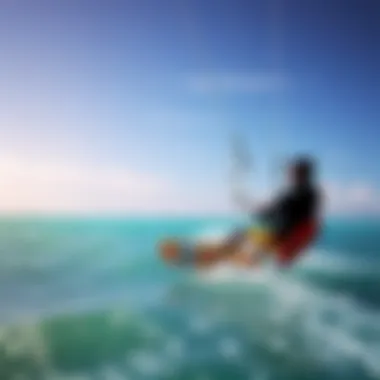
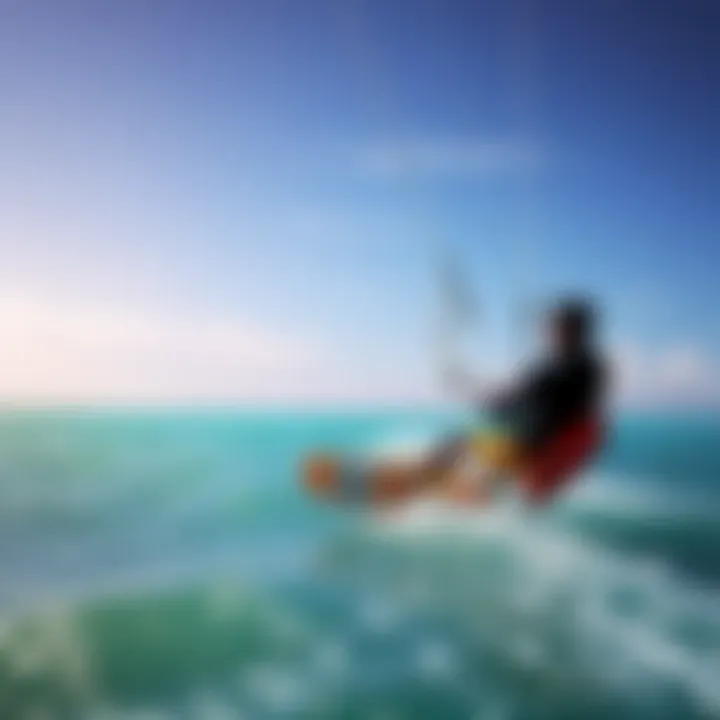
For more insights on weather patterns, consider visiting NOAA Climate Prediction Center or Meteoblue.
Top Kitesurfing Destinations in Sri Lanka
Kitesurfing isn’t just a sport; it’s an experience, especially in a location as stunning as Sri Lanka. This island nation is characterized by its varied landscape and coastal beauty, making it a mecca for kitesurfers from all over the globe. Each kitesurfing destination has its own unique vibe, catering to different skills and preferences. By delving into these top spots, adventurers can decide which destination aligns best with their desires, whether it’s the thrill of jumping waves or a more laid-back atmosphere to enjoy the sun and sea.
Kalpitiya: The Kitesurfing Capital
Kalpitiya stands tall as Sri Lanka's kitesurfing capital, attracting both newcomers and seasoned riders alike. The flat waters of the Kalpitiya Lagoon are ideal for practicing tricks and honing your skills, notably complemented by consistent winds that blow from May to October.
In addition to the excellent conditions, the town is supportive of kitesurfers, boasting numerous schools and rental shops. For someone just getting their feet wet—pun intended—this place serves well, as instructors offer tailored lessons. Kalpitiya’s charm lies beyond kitesurfing; the untouched beaches and nearby islands present other ways to soak in the natural beauty. After a day out on the water, you can explore the untouched landscape or indulge in local seafood at nearby shacks.
Hikkaduwa: A Vibrant Spot for Enthusiasts
Hikkaduwa is a bustling tourist hub, attracting those who want to combine kitesurfing with vibrant nightlife and culture. The beachfront here buzzes with energy, making it a fantastic location for socializing after a day of kitesurfing. The wind conditions change seasonally, and while it’s not as consistently favorable as Kalpitiya, the atmosphere draws many thrill-seekers looking for a lively backdrop.
The community is welcoming, and you’ll often encounter groups of kitesurfers sharing tips, making it a good spot for network-building. Hikkaduwa also offers a variety of other water sports and activities, making it an excellent choice for those traveling with friends or family who may not all be kitesurfing enthusiasts. Beaches lined with coral reefs show off the marine life, enabling opportunities for snorkeling and diving.
Unawatuna: Blending Relaxation with Adventure
If you have a penchant for tranquil settings combined with a hint of adventure, Unawatuna may be your spot. Known for lush palm trees and serene beaches, this area offers calmer conditions suited for beginners. It’s smaller compared to Kalpitiya or Hikkaduwa, creating an intimate atmosphere.
The kitesurfing conditions are stable, especially during the winter months, making it a favored choice for those just starting in the sport. After catching some wind, visitors can find bliss in local cafes serving fresh juices and delicious Sri Lankan curries. The nearby attractions, including historical sites and serene bays, allow for a well-rounded experience of both culture and leisure.
Mannar: An Emerging Kitesurfing Paradise
Mannar may not be on most travelers’ radar yet, but it’s quickly emerging as a top contender in the kitesurfing community. With strikingly clear waters and steady winds, it's a location showing promise. This region presents the unique advantage of fewer crowds, giving riders ample space to practice without the hustle and bustle found in more popular areas.
With spots like the sand dunes and lagoons, Mannar offers varied conditions that cater to different skill levels. Adventurers keen on discovering untouched beauty will appreciate the distinct landscapes here. Additionally, the local community is keen to welcome visitors, ensuring that kitesurfers can immerse themselves in their way of life.
"Every place you kite in Sri Lanka tells a different story about the wind and waves—choose wisely!"
Ultimately, the selection of kitesurfing destinations in Sri Lanka allows each individual to tailor their adventure, reflecting personal preferences for excitement, culture, and relaxation. Whether you’re after the thrill or looking for a peaceful escape with a hint of adventure, Sri Lanka has something special to offer every kitesurfer.
Equipment Requirements for Kitesurfing
Kitesurfing in Sri Lanka is more than just a thrilling adventure; it demands the right equipment for safety, enjoyment, and overall performance. Whether you’re just getting your feet wet or you’re a seasoned pro, understanding the necessary gear can make all the difference. Proper equipment not only enhances your experience but also helps mitigate risks involved in this exhilarating activity. This section outlines what you need to consider when gearing up for a kitesurfing adventure in Sri Lanka.
Necessary Gear for Beginners
If you are new to kitesurfing, you want to make sure you have some fundamental gear to get you started. Here’s a rundown of the must-haves:
- Kite: This is the heart and soul of your kitesurfing setup. For beginners, a larger kite often means more lift. Look for one that has the ability to handle varying wind conditions. Brands like Cabrinha and North offer great options for beginners.
- Board: A beginner’s board should be wider and longer, making it more stable in the water. This added surface area will help as you learn to balance and control the kite.
- Harness: This is essential to connect you to the kite and take the strain off your arms. Opt for a comfortable waist or seat harness, as it can make a significant difference during long sessions.
- Safety Leash: This piece of equipment is pivotal. It keeps the kite connected to you in case of an emergency, ensuring it won’t drift away or pose a danger to others.
- Impact Vest or Buoyancy Aid: These can protect you from water impacts and help with flotation.
- Water Shoes: A good pair of shoes protects your feet from sharp objects and are more comfortable when standing on a board.
Having the right beginner gear is crucial, as it allows you to learn effectively while enjoying the sport to the fullest. Safety should always come first, and the above items cover the basics to ensure you are secure.
Advanced Equipment Considerations
Once you’ve got a grip on the basics, you might want to consider upgrading your gear to suit your evolving skills and needs. Here are some advanced options to think about:
- Kite Size Selection: As you become more skilled, you might experiment with different kite sizes for various wind conditions. Smaller kites are easier to maneuver but require stronger winds, while larger kites offer more power.
- Different Board Types: Advanced riders may want to explore different types of boards—freestyle boards for tricks, or surfboards for wave riding. Each kind caters to different styles of kitesurfing, enriching your experience.
- Foil Kites and Boards: These systems provide an entirely different experience, lifting you above the water to ride on a hydrofoil. They’re meant for those looking to advance their performance levels.
- Upgraded Harness Options: Consider getting a high-performance harness that allows for quick adjustments and more comfort during extended sessions.
- Safety Accessories: Advanced riders should think about upgrading their safety equipment, like a high-quality impact vest that also offers flotation and a helmet for added protection.
When choosing advanced equipment, always consider your skill level and the environment in which you’ll be riding. Not every piece of gear is necessary for everyone, so choose wisely and based on your personal kitesurfing journey.
Local Rental Options vs. Bringing Your Gear
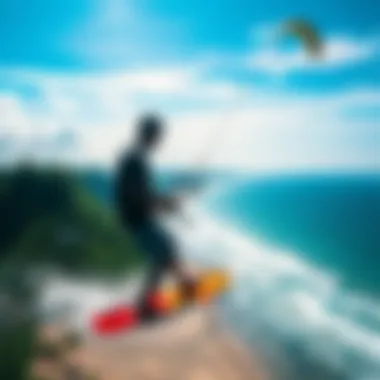
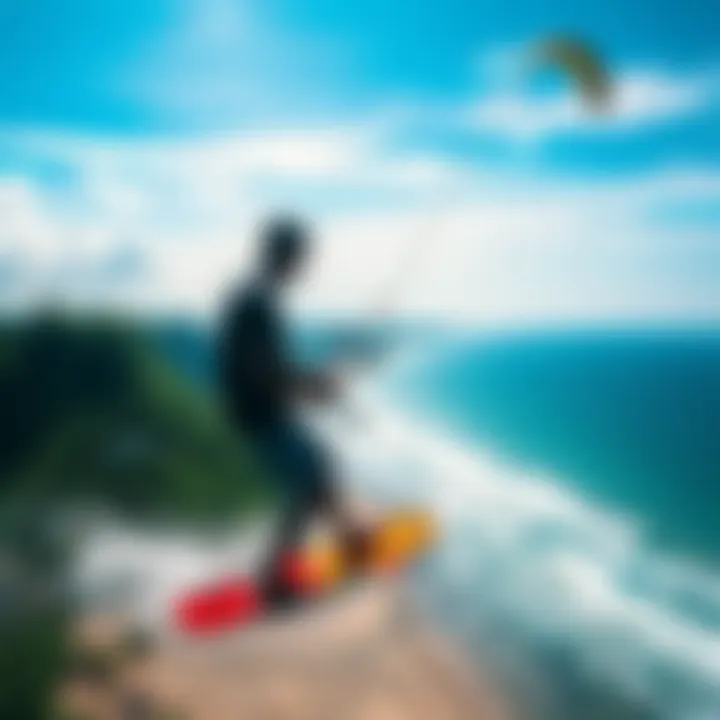
When planning your kitesurfing trip to Sri Lanka, you’ll face the choice of either bringing your own gear or renting equipment locally. Both options have their pros and cons:
- Bringing Your Own Gear:
- Renting Locally:
- Pros: Familiarity with your own equipment boosts confidence. It ensures you have gear that you know works well for you.
- Cons: Transporting your gear can be cumbersome and may incur additional luggage fees. There’s also a risk of equipment damage.
- Pros: Renting can save you the hassle of transportation and provide you with the opportunity to try local equipment that might better suit the specific conditions of Sri Lanka. Rental shops often have up-to-date gear that's well-maintained.
- Cons: You might not have the same comfort level as with your own gear, and quality can vary between rental shops. It’s essential to do your homework to find a reputable rental service.
"Choosing between bringing your own gear or renting in Sri Lanka ultimately comes down to personal preference, convenience, and your comfort level with the equipment."
Safety Precautions and Best Practices
Kitesurfing, while exhilarating, can also present a set of risks that require careful consideration. Ensuring your safety and being informed about the best practices is paramount, especially in an environment as dynamic as the waters off Sri Lanka. Understanding how to navigate these risks not only protects you but also enhances your overall kitesurfing experience. Here, we'll examine critical aspects of safety, with a particular focus on wind conditions, water hazards, and the buddy system.
Understanding Wind Conditions
The winds that sweep through Sri Lanka’s coasts create ideal conditions for kitesurfing, but these conditions can vary significantly. Before heading out, it’s essential to check the wind forecast.
- Wind Speed: For beginners, it's advisable to look for winds between 12 to 20 knots. Stronger winds could be overwhelming and may lead to accidents or injury.
- Wind Direction: The orientation of the wind can greatly affect your kitesurfing experience. Onshore winds can be safer compared to offshore winds since they blow towards the beach, allowing you to return easily in case of trouble. Keep attentive to changes; gusty and shifting breezes are signs that one should consider waiting for a more stable condition.
Understanding how these factors impact your ride is crucial. A kite can become difficult to control in inconsistent winds, so reading the conditions is as important as riding the waves. As the saying goes, know the elements before you face them.
Assessing Water Hazards
The beauty of Sri Lanka's beaches can sometimes mask potential dangers lurking beneath the surface. Familiarizing yourself with various water hazards can reduce risks significantly.
- Shallow Areas: Areas where the water is too shallow can pose problems, especially during accidents. You could risk injury if the kite suddenly pulls you down, and hitting the seabed can be painful.
- Debris: Always be wary of floating debris, like branches or plastic, which can endanger your ride.
- Rip Currents: Be knowledgeable about local rip currents as they can pull even experienced surfers away from the shore. Learning to identify and avoid them is essential for every kitesurfer.
Taking a moment to look at your surroundings and understand where it's safe to ride can mean the difference between an adventure and a mishap.
Buddy System and Emergency Procedures
Having a wingman might seem like a simple notion, but it's golden rule in the kitesurfing community. Always kitesurf in pairs or groups. This precaution serves multiple benefits:
- Safety in Numbers: If any situation arises, having someone nearby who can help makes a big difference.
- Emergency Protocols: It’s wise to discuss emergency procedures with your buddy before going out. Know how to signal for help and how to react if one of you gets into trouble. Understanding basic rescue techniques can be lifesaving.
Remember, while kitesurfing can be thrilling, the ocean demands respect. Being aware of wind conditions, assessing water hazards, and following safety protocols like the buddy system greatly reduces risks involved, allowing you to focus on enjoying the ride.
"Safety can't be guaranteed in any sport, yet timeless vigilance is the companion of a great adventure."
Engaging with the local kitesurfing community can also provide you with insights for navigating these waters like a seasoned pro. Knowing who to turn to for help and guidance can enrich your experience and possibly deepen your understanding of local customs and dangers. By prioritizing safety, you not only protect yourself but also contribute to a safer kitesurfing environment for all enthusiasts.
Cultural and Community Engagement
The Local Kitesurfing Community
Engaging with the local kitesurfing community in Sri Lanka presents an invaluable opportunity for both newcomers and seasoned riders. This community is not just about riding the waves; it encompasses a shared passion for the sport that transcends cultural barriers. Often, you will find local gurus eager to share their wisdom not only about kitesurfing techniques but also about the sea, the winds, and the local environment.
Many of these local kitesurfers are rooted in their traditions and have invaluable insights into the safest practices and the best spots based on years of experience. Joining group excursions or participating in community events provides a superb way to meet fellow enthusiasts, create friendships, and enhance your kitesurfing skills. Moreover, it’s a joy to see how local surfers encourage green practices. There's a growing emphasis on protecting marine life and the coastal ecosystem, as the community understands these waters are integral to their lifestyles.
Respecting Local Customs and Traditions
When kitesurfing in Sri Lanka, one must be aware that it's more than just an adventure sport. It's entwined with local culture which deserves respect and appreciation. Different areas of Sri Lanka have unique customs, historical practices, and spiritual beliefs that can enrich the kitesurfing experience.
For instance, it’s crucial to practice humility while interacting with the locals, particularly in coastal villages. Simple gestures, like greeting residents in Sinhala or Tamil and asking about their lives, can go a long way. Engaging with the culture not only enhances the experience but fosters goodwill among the local population. When kitesurfers respect customs like the local dress code or partake in traditional festivals, it showcases an understanding that extends beyond just the sport.
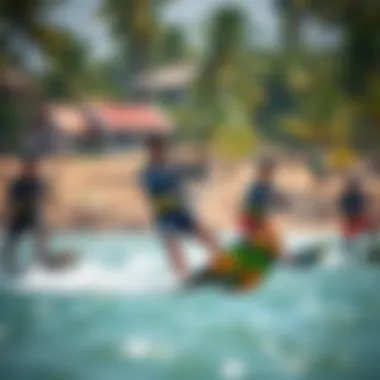
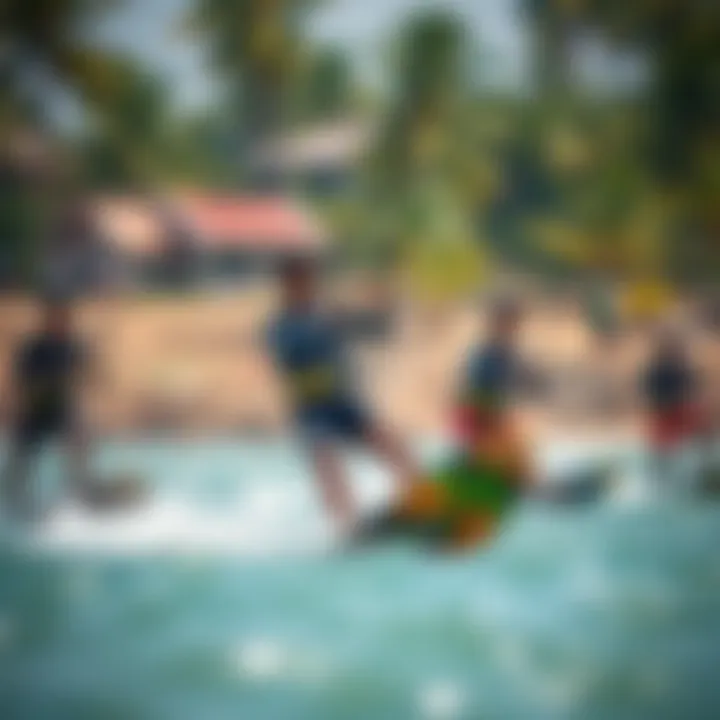
When approaching any sacred sites or local events happening nearby, taking time to learn about their significance will deepen your appreciation for the area. Respect leads to mutual respect, creating a safer and more enriching environment for both the kitesurfers and the local community.
Training and Lessons for Beginners
Kitesurfing can be a thrilling venture, but for those new to the sport, proper training and lessons are essential. Learning the basics under the guidance of experienced instructors not only ensures safety but also enhances the learning curve. A well-structured course will introduce beginners to necessary techniques, instill confidence, and greatly improve their overall experience on the water.
Finding a Reputable Kitesurfing School
When searching for a kitesurfing school in Sri Lanka, it pays to do a little homework. You want a school that has a solid reputation, skilled instructors, and good safety records. Look for schools that are accredited by recognized bodies such as the International Kiteboarding Organization (IKO) or the Global Kiteboarding Association (GKA). Online reviews can offer invaluable insights; check out platforms like Reddit or Facebook to get the lowdown from other kitesurfers who have walked that path. Here are some hallmarks of a reputable school:
- Qualified Instructors: Ensure the instructors are not just experienced in kitesurfing but also possess teaching certifications.
- Safety First: The school should prioritize safety, with well-maintained equipment and clear safety protocols in place.
- Positive Reviews: Look for testimonials and positive feedback from past students to gauge the quality of instruction.
- Facilities: A well-equipped school will have a designated area for lessons, safe storage for gear, and access to rescue boats.
With a bit of research, you can find a school that caters to your skill level and helps you grow from novice to a competent kitesurfer.
What to Expect in Your First Lesson
Your first lesson is often memorable. Expect the unexpected, but the primary goal is to get you acquainted with the gear and the wind. Typically, your instructor will start off with an explanation of the equipment, covering items like the kite, harness, and board. Most schools will begin with land-based training to familiarize you with flying the kite and understanding its control before heading into the water.
- Ground School: You will learn about kite setup, and safety releases, and practice flying the kite on land. This phase is critical as it teaches you how to manage the kite’s power and steering.
- Water Entry: Once you’ve grasped the control aspects, you’ll venture into the water under close supervision. Your instructor will guide you on how to get onto the board, how to stand up, and how to ride.
- Progress at Your Own Pace: Don’t be worried if you don’t get it right away; mastering kitesurfing takes practice. Some students might catch on quickly, while others might take a few lessons to find their feet.
A well-rounded first lesson sets the foundation of your kitesurfing journey, equipping you with the skills you need to progress further. Embrace the learning process and don’t rush; with time and practice, those waves will soon feel like home.
Post-Kitesurfing Activities
After an exhilarating day out on the water, kitesurfing enthusiasts often seek ways to wind down and soak in the local culture. These post-kitesurfing activities not only offer relaxation but also allow adventurers to dive deeper into the vibrant lifestyle of Sri Lanka. Engaging in local experiences can make your kitesurfing trip much more memorable and enriching.
Local Cuisine to Explore
One cannot truly appreciate a place without indulging in its culinary delights. Sri Lanka offers a thrilling palette of flavors, making it essential for kitesurfers to explore the local cuisine after a day filled with action.
- Seafood Galore: You’ve just spent hours riding the waves; now it’s time to feast on the freshest catch of the day. From grilled fish to spiced prawn curries, the coastal areas boast a variety of seafood that will tantalize your taste buds.
- Traditional Dishes: Don't overlook local classics like kottu roti or hoppers — these dishes are hearty, satisfying, and will give you the energy you need for the next day’s kitesurfing. You may even find street vendors serving up delicious bites that are as authentic as they come.
- Refreshing Drinks: Pair your meal with local beverages such as king coconut water or tender coconut, which is perfect for hydrating after a long day in the sun.
Cultural Attractions Nearby
Venturing beyond the beach is a gateway to appreciate the rich history and traditions that Sri Lanka has to offer. Whether you’re looking for something low-key or more adventurous, there are cultural attractions that can enhance your experience.
- Historical Sites: Sri Lanka is home to ancient ruins and temples, such as the Dutch Fort in Galle. A stroll through these historical sites can provide insight into the island’s colonial past and architectural beauty.
- Local Markets: Immerse yourself in local culture by visiting bustling markets. These are not just places for shopping but vibrant hubs filled with lively interactions. From artisan crafts to spices, you will find a plethora of items that reflect the heart of Sri Lankan culture.
- Wildlife Sanctuaries: Just a short drive away, you can explore the wildlife sanctuaries where unique fauna and flora thrive. A safari in Yala National Park could very well provide a chance to see leopards and other endemic species, contrasting beautifully with the adrenaline of kitesurfing in the ocean.
In summary, post-kitesurfing activities are not just leisure; they are extensions of the adventure itself. From savoring local dishes to exploring cultural gems, these moments contribute to an enriching kitesurfing experience in Sri Lanka. Engaging fully with both the waves and the land only deepens the connection to this island paradise.
Culmination: Embracing the Kitesurfing Experience in Sri Lanka
In wrapping up this exploration of kitesurfing in Sri Lanka, it is essential to reflect on not just the thrill of the sport, but also on what this experience can mean for avid thrill-seekers. Kitesurfing in Sri Lanka presents far more than simple excitement; it weaves a complex tapestry of adventure, culture, and connection.
When one steps onto the sandy shores of Kalpitiya or Unawatuna, they aren't merely preparing for a ride across the waves. They are entering a sanctuary where nature's power combines seamlessly with human ingenuity. The consistent winds and stunning waters create the perfect backdrop, allowing both novices and seasoned riders to thrive.
Benefits of this kitesurfing journey include:
- Physical Empowerment: The sport enhances your physical abilities, offering a full-body workout that pushes your limits.
- Mindful Engagement: Navigating the water teaches focus and presence, as riders become attuned to their surroundings.
- Community Connection: By joining the local kitesurfing circles, participants foster friendships and find a supportive network. The shared experience on the water amplifies camaraderie.
Moreover, embracing the kitesurfing experience goes beyond just catching the perfect wave. It’s about understanding the surrounding culture, respecting local customs, and truly connecting with the destination. By doing so, kitesurfers contribute positively to the island's community, ensuring that these vibrant sessions on the water remain sustainable for future adventurers.
"Kitesurfing is not just about the thrill; it's about blending in with the beauty and rhythm of Sri Lanka's landscapes."
Ultimately, kitesurfing in Sri Lanka is a unique adventure waiting to be experienced. It builds memories upon the reliable winds and endless waves. For those yearning for both thrill and immersion, this incredible destination guarantees a remarkable journey that encompasses far more than just a sport. It’s an invitation to live the adventure, to celebrate nature, and to form bonds that last a lifetime.
Reflection on the Adventure
Reflecting on this kitesurfing journey in Sri Lanka leads one to appreciate the seamless integration of adrenaline and serenity. Each session on the water offers lessons in patience, adaptability, and respect for the ocean.
As riders navigate through the winds and tide, they often find parallels to life's challenges—riding through storms, waiting for the optimal moment, and celebrating the wins. This sport isn't merely about harnessing powerful winds; it embodies the essence of chasing dreams amid unpredictable elements.







